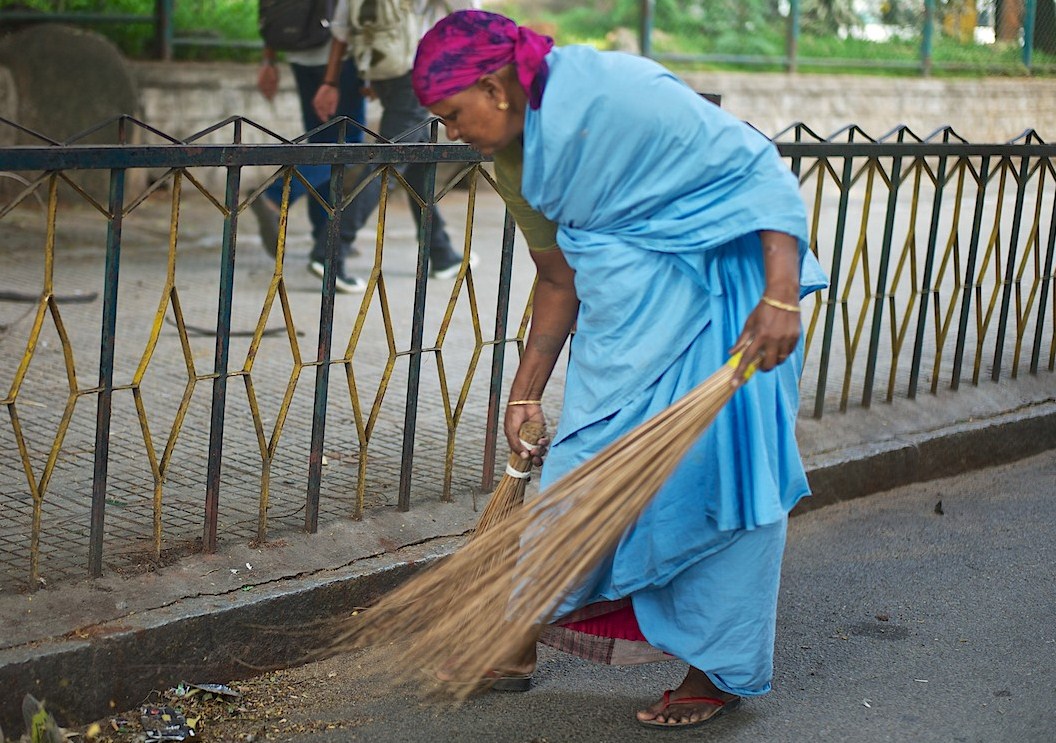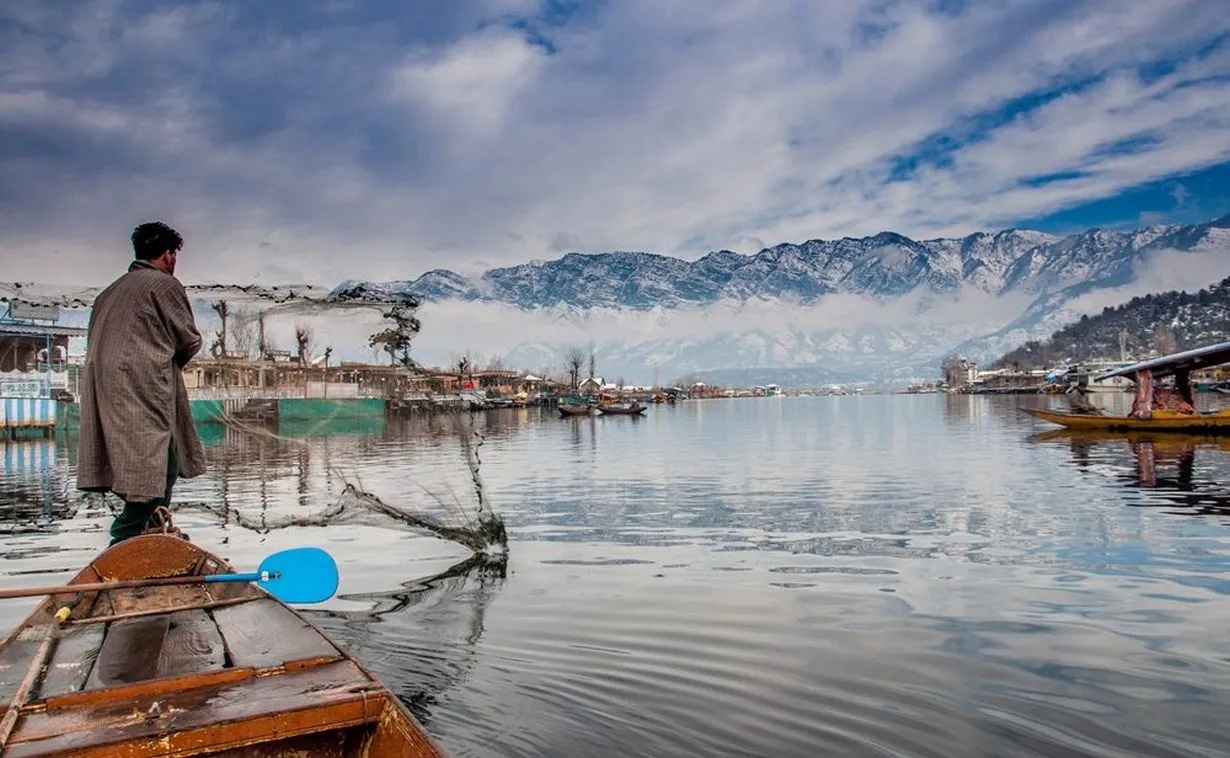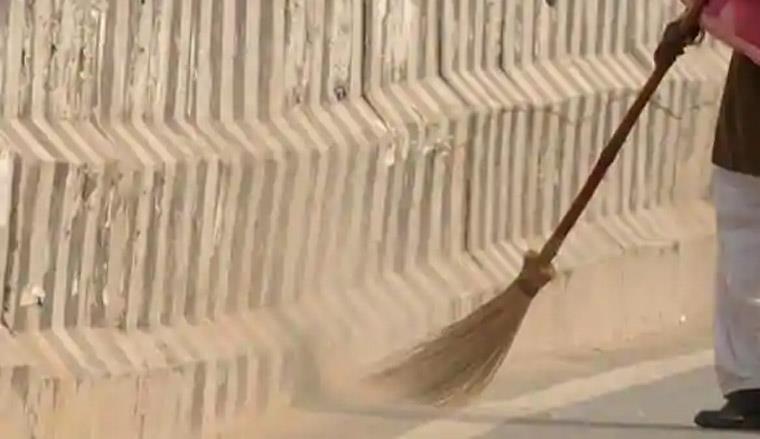
In this piece, the author probes disparities between scheduled caste and tribe communities in Kashmir and Bangalore.
By Maheen Sajjad
EARLY mornings in Bangalore, as I like to call it, a city of junctures, are mildewed, with an emphatic fume of incense coming from the temple, next door to the building I stay in, and an even stronger stench of garbage trucks.
I recall, one time, my landlady called us all downstairs to her floor because someone had dumped the garbage in the bin in “all wrong ways.” Results: the intestines of the garbage were floored, and thus scouring was to happen.
Nonetheless, after a session of obeyed scuttlebutts, the lady that collects garbage from our building; the one that wears a green jacket that reads something in Kannada on the back, walked by and then, like how disturbances in the force are real, and there is such a thing as some magical transcendent field of energy, the landlady spotted her like a speed scanner, almost toppled her coffee over.
The lady who only picked trash bags ended up washing our bin that day and was paid a little extra for that. One of the residents later by that date, showed me a picture that they took of mine, strangely looking at the landlady. I don’t exactly remember what transpired in my mind, but I recall thinking that back in Kashmir, we wouldn’t have waited for the cleaning lady or someone else to come and clean our house dustbins for us. Not because it is unethical, but because asking someone to do something like that for you is too blatant and makes the hierarchical system look too obvious.

I was raised in a family of workers; in a literal sense, people who work for the community but nonetheless are seized by capitalist rationales. My caretaker, Noora, was the only one I remember spending time with as a child. In those years, the first person I would call if I stumbled would be him, and so in terms, he had an assertive role to play in bringing me up in all fitting conventions.
Noora stopped working for us nearly a decade ago. He calls us once or twice every six months, but that’s irrelevant. What’s relevant is that Noora juggles three jobs a day, which to me sounds, in a literal sense insane.
He comes from a Scheduled caste, specifically Sheikh, and he’s one of three brothers in his family who refuses to stick to his varna practices. From what I’ve noticed, moving away from your traditional varna practices is something that is somewhat uncommon in Kashmir but actually very common in metropolises like Bangalore.
The Kram division of the past in today’s time does stand still but doesn’t necessarily stand true for banal reasons. In college, with one of our professors in class, we once discussed the differences between Jati practices and Varna practices in a country like India. What that three-hour-long conversation led to was, us halting and agreeing with Ambedkar’s reasoning that Varna conventions are just a façade, that behind it all, it’s all basic Jati practices.
If we look at the valley, there’re undoubtedly differences in how different communities are regarded based on the types of jobs they perform or are expected to perform.
Haenz, a tribe of people in Kashmir known as the descendants of Noah, is one example of how some communities still stick to the same varna practices for several reasons, including adherence and obligations, in this case, fishing.

For a project, I once interviewed women from the fishers community, and during our exchanges, one thing that prominently stood out was that the community marries among itself; that the community cannot marry their children outside of their ground, outside of a setting where people don’t fish. The reasons for this, if you go around asking, are just that there is a hierarchy implicated in the ways people take up jobs.
The fishers community finds it difficult to marry outside their culture because they believe they will be treated differently because of their profession. In retrospect, this understanding emphasizes the existence of a kind of separation that persists in the valley as well, which is comparable to Varna practice (concern with one’s occupation), behind which lies the rigid system of Jati practices (concerned with birth), but isn’t always labelled as such.
The prominence of this blatant difference, however, is more obvious in a setting outside Kashmir, such as a city like Bangalore.
Over the years I’ve lived there, the division of labour and what it does to a community have repeatedly caught my attention. Given that Bangalore is a melting pot of cultures, ethnicities, and traditional practices, I couldn’t help but notice how the people of the Dalit community there constantly think about giving back to their roots.
Noora left home at a very young age. He still lives in the city while his family lives in Anantnag. The three jobs he juggles are all for the benefit of his family, and that’s verbatim where the epicentre is. His repayment is specific to his family rather than his community, which is very common among different scheduled caste and tribe communities in Kashmir. It’s about repaying your family and not the community that you belong to, and that’s what stands in opposition to something that the Dalit community outside Kashmir does.

The Casteless Collective and other small associations and organizations are straightforward examples of how marginalized communities in the present have banded together to challenge the hierarchy in a way that is particular and distinctive to them. Although the level of marginalization is not as severe, it’s somewhat troubling that there’s a lack of comparable unity in communities here in Kashmir.
In contrast to a setting like Bangalore, a metropolis, where the Dalits are trying to create a space that is safe and specific to them by leaving their surroundings, learning new skills, voicing their opinions, and then instituting all their learnings back home, there’s nothing of the sort to be seen here in Kashmir.
There’re many layers to this argument, and religion is a major driving force in this division. The valley is primarily inhabited by Muslims, and as such, Islam does not have a caste class hierarchy, so the division is not purposefully and openly presented. It does, however, still exist.
Furthermore, the economic conditions of the state in general, when compared to a metropolis, are far better, in terms that severe problems like people dying because of hunger aren’t every day in Kashmir while it’s the opposite in Bangalore.
Taking all of this into consideration, there are plausible explanations for why there’re differences, why there’re changes taking place, and how individuals take on duties and strive to carve out space for themselves. All of this is valid in a city like Bangalore where there is greater communal cohesion. This isn’t necessarily the case, though, for a region like Kashmir because the majority of the inequities aren’t explicitly addressed, despite the fact that they still exist.
And because of this unspoken suffering around the differences, the reasons given and measures taken for it are as obscure, which distinguishes Kashmir from Bangalore.
Follow this link to join our WhatsApp group: Join Now
Be Part of Quality Journalism |
Quality journalism takes a lot of time, money and hard work to produce and despite all the hardships we still do it. Our reporters and editors are working overtime in Kashmir and beyond to cover what you care about, break big stories, and expose injustices that can change lives. Today more people are reading Kashmir Observer than ever, but only a handful are paying while advertising revenues are falling fast. |
| ACT NOW |
| MONTHLY | Rs 100 | |
| YEARLY | Rs 1000 | |
| LIFETIME | Rs 10000 | |













